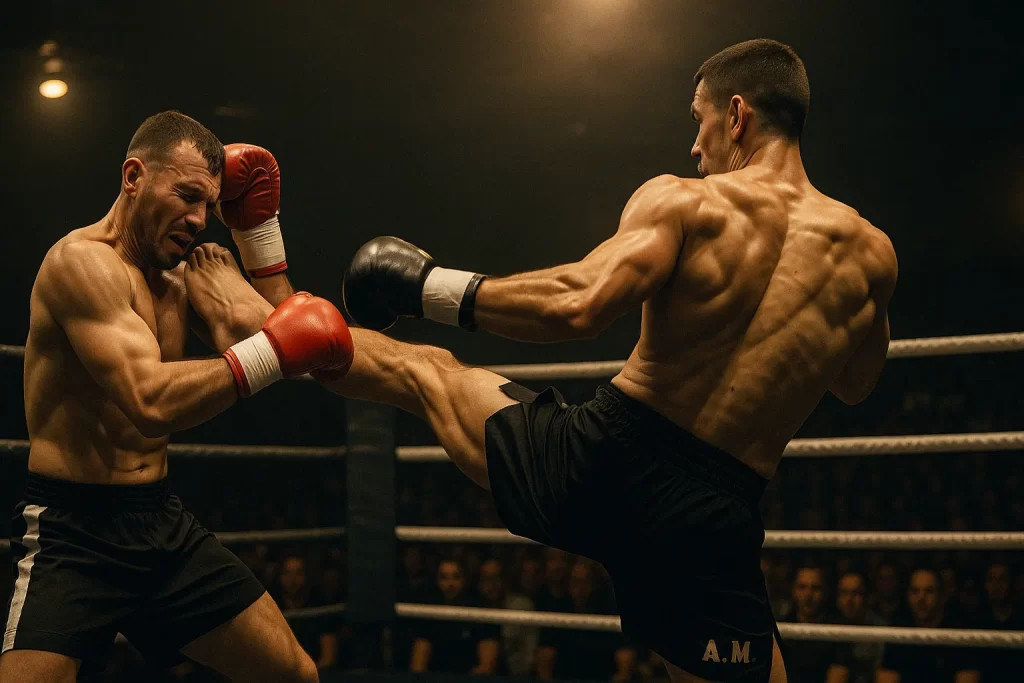Dutch Style

Dutch Kickboxing is a powerful and aggressive striking art that fuses Western boxing with Kyokushin-style low kicks and relentless pressure. Originating in the Netherlands during the 1970s, it evolved through the influence of Japanese kickboxing and Muay Thai, but with a uniquely Dutch training methodology focused on sparring and heavy bag work. Known for its sharp combinations, brutal low kicks, and forward-moving rhythm, it has produced some of the most dominant fighters in K-1 history. Dutch Kickboxing remains one of the most respected and feared striking systems in the combat sports world today.
Dutch Style Essentials
About Dutch Style
Discover what defines Dutch Kickboxing—its hybrid roots, distinctive techniques, and reputation for pressure fighting. This section introduces its key characteristics and how it differs from other kickboxing styles.
Dutch Style History
Trace the rise of Dutch Kickboxing from the influence of Kyokushin karate and Japanese kickboxing in the 1970s to its global success through fighters like Ramon Dekkers and Ernesto Hoost. Learn how Dutch gyms shaped the evolution of modern striking.
Philosophy & Approach
Dutch Kickboxing is built on aggression, efficiency, and toughness. Explore how Dutch fighters are trained to move forward, break rhythm, and condition both body and mind through relentless drilling and sparring.
Techniques & Style
Delve into the iconic Dutch combinations—boxing flurries ending in leg kicks, tight defensive structures, and advanced pressure strategies. Learn why this system excels in both sport and real-world combat.
Traditions & Etiquette
While modern and sport-focused, Dutch Kickboxing still holds to core values of respect, hard work, and gym loyalty. Understand the unspoken rules of Dutch fight culture and the role of sparring hierarchy in the gym.
Uniform & Symbols
There is no formal uniform, but Dutch kickboxers typically train in shorts, shin guards, and gloves. This section covers gym branding, fighter aesthetics, and the practical gear used in daily training.
Weapons
Dutch Kickboxing is strictly unarmed, focusing entirely on fists, elbows, knees, and shins. Unlike Muay Thai, traditional weapons or forms are not part of the curriculum.
Ranking System
Most Dutch Kickboxing gyms don’t use a belt ranking system. Learn how progression is measured through experience, fight performance, and respect earned inside the gym.
Dutch Style Glossary
A practical glossary of key terms, drills, and techniques used in Dutch Kickboxing—covering everything from “low kick” mechanics to signature combinations like “3-2-low.”
Notable Figures
Meet the legends of Dutch Kickboxing—Ramon Dekkers, Rob Kaman, Ernesto Hoost, and more. This section highlights the fighters who made the Dutch style world-famous.
Branches & Organizations
Explore the major gyms and systems that define Dutch Kickboxing, including Mejiro Gym, Chakuriki, and Golden Glory. Learn how these institutions shaped international rules and standards.
Competitive Format
Get familiar with how Dutch-style fighters compete—under K-1 rules, modified Muay Thai, and international kickboxing regulations. Learn about ring strategy, scoring, and typical match structure.

